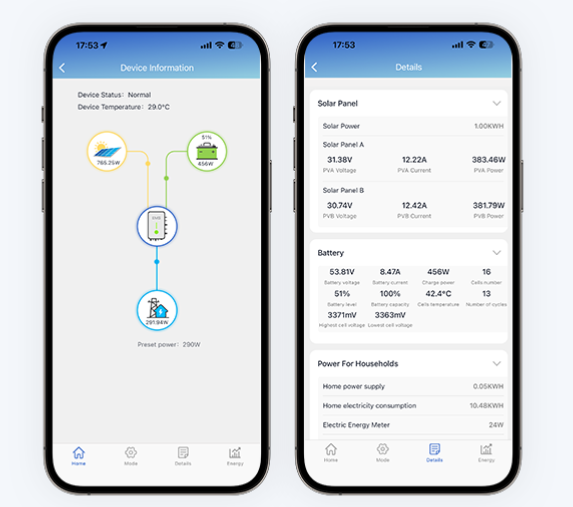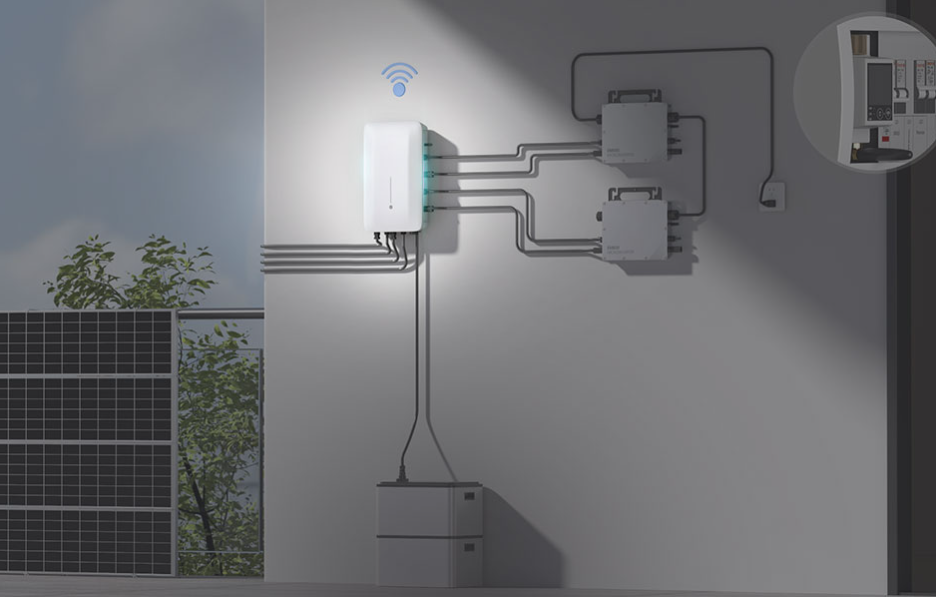As the world moves toward greener and more sustainable energy solutions, solar power has become a key player in reducing our carbon footprint and lowering energy costs. However, managing solar energy efficiently and automating its use to match the needs of a home or business can be a challenge. This is where Solar Energy Management Systems (Solar EMS) come into play.
When integrated with home automation technologies, Solar EMS can significantly improve energy efficiency, convenience, and cost savings.
What is Solar EMS?
Solar Energy Management Systems (Solar EMS) are integrated platforms that optimize the performance of solar power systems by controlling how energy is produced, stored, and consumed within a home or building. These systems manage the flow of energy from solar panels to batteries and home appliances, ensuring that solar power is used efficiently. Solar EMS typically includes features like:
|
Energy Monitoring: Tracks solar energy production, battery charge levels, and overall consumption. |
|
Load Control: Adjusts energy distribution across appliances and systems to prioritize solar energy use when available. |
|
Battery Management: Ensures that excess solar power is stored in batteries for later use, reducing reliance on grid power. |
The primary goal of EMS solar system is to maximize the use of solar energy while minimizing energy waste, which is especially important in homes that rely on solar panels for most of their power needs.

Integrating EMS Solar System with Home Automation
Home automation has revolutionized the way homeowners interact with their living spaces. Technologies like smart thermostats, lighting controls, and energy monitoring systems allow users to control their home's energy use remotely, creating an environment of comfort and convenience. Integrating smart energy management system with these automation technologies can optimize the use of solar power and provide a seamless user experience.
Here's how the integration works:
Smart Thermostats: By integrating smart energy management system, the system can adjust indoor temperatures based on solar energy availability. For instance, if there's excess solar energy during the day, the system can use that power to run the HVAC system or heat water, reducing reliance on grid electricity.
Smart Lighting Controls: Smart lighting systems can be programmed to turn off or dim lights when solar power is low or when the house is unoccupied. Solar EMS ensures that these adjustments are made automatically, optimizing energy use based on solar availability.
Energy Monitoring Systems: These systems collect data on energy production and consumption, providing insights into how much energy your solar system is generating and how much is being used. Solar EMS uses this data to make decisions about energy distribution, ensuring that solar power is used first before switching to grid power.
Benefits of Automated Solar Energy Use
Convenience: Automation makes it easy for homeowners to manage energy use without lifting a finger. With Solar EMS integrated with smart devices, energy management becomes a hands-off experience that adjusts based on the time of day, weather, and personal preferences.
Energy Savings: Automated energy use can lead to significant savings by using solar energy when it's abundant and avoiding peak-grid usage times. For example, during sunny days, your smart thermostat can use solar power to cool your home, while your lights can automatically adjust based on natural daylight.
Cost Efficiency: By optimizing the use of solar power, homeowners can reduce their dependency on expensive grid electricity. Additionally, energy storage systems ensure that excess solar power is stored for later use, helping homeowners avoid high electricity costs during peak periods.
Environmental Impact: Automated solar systems reduce carbon footprints by maximizing the use of renewable energy. This also helps homeowners feel good about their contribution to sustainability and environmental protection.
Success Stories of Automated Solar Systems
Case Study 1: Family Home with Solar EMS Integration
The Johnson family installed a solar power system combined with Solar EMS and a smart thermostat. The integration of these systems allowed them to automate temperature adjustments based on solar energy availability, leading to a significant reduction in their reliance on grid power. Additionally, their smart lighting system was able to adjust automatically throughout the day, further reducing energy waste. Over the course of a year, the Johnsons saw a 30% reduction in their energy bill, all while enjoying a more comfortable living environment.
Case Study 2: Small Business Using Solar EMS and Energy Monitoring
A local coffee shop decided to integrate Solar EMS with energy monitoring devices to improve efficiency and reduce operating costs. By using solar energy for heating and cooling during daylight hours and storing excess energy in batteries, the business reduced its monthly utility costs by 25%. The energy monitoring system also helped identify inefficiencies in energy use, which allowed the owners to make informed decisions about when to operate energy-intensive equipment.
Key Home Automation Technologies Compatible with Solar EMS
Several home automation technologies can work hand-in-hand with Solar EMS to enhance energy efficiency:
Smart Thermostats: These thermostats adjust your home's temperature automatically, learning your preferences and optimizing the use of solar energy for heating and cooling. Some models even use weather forecasts to adjust the settings in advance.
Smart Lighting Controls: Automated lighting systems adjust according to occupancy or time of day. They can dim lights or turn them off completely when the room is not in use or when sufficient natural light is available.
Energy Monitoring Systems: These devices keep track of energy production, consumption, and storage, giving users full visibility into their energy use. Solar EMS integrates with these systems to make real-time adjustments to the energy flow in your home.

Tips for Homeowners to Automate Solar Energy Use
Assess Your Energy Needs: Start by understanding your energy consumption patterns. Determine which devices consume the most energy and how you can optimize their use with Solar EMS.
Choose Compatible Devices: Ensure that your home automation systems are compatible with Solar EMS. Many manufacturers offer systems designed to work together for seamless integration.
Set Up Energy-Saving Schedules: Program your Solar EMS to use solar energy during the day when the sun is shining, and store excess energy in batteries for later use. You can set specific schedules for when your HVAC system or lights should operate based on your daily routine.
The Future of Solar EMS and Home Automation
As solar energy technology continues to evolve, so too will the capabilities of Solar EMS. Future advancements could include artificial intelligence (AI) systems that learn your energy consumption habits and optimize energy use in real-time. Additionally, voice-activated systems and further integration with other smart home devices will make energy management even more effortless.
Conclusion
Integrating Solar EMS with home automation technologies is a game-changer in optimizing solar energy use, improving home comfort, and reducing energy costs. With automated systems handling temperature control, lighting, and energy storage, homeowners can enjoy a more efficient, convenient, and sustainable living environment. As solar technology continues to advance, the possibilities for automation and energy management will only continue to grow, making it easier than ever to harness the full potential of solar power.


